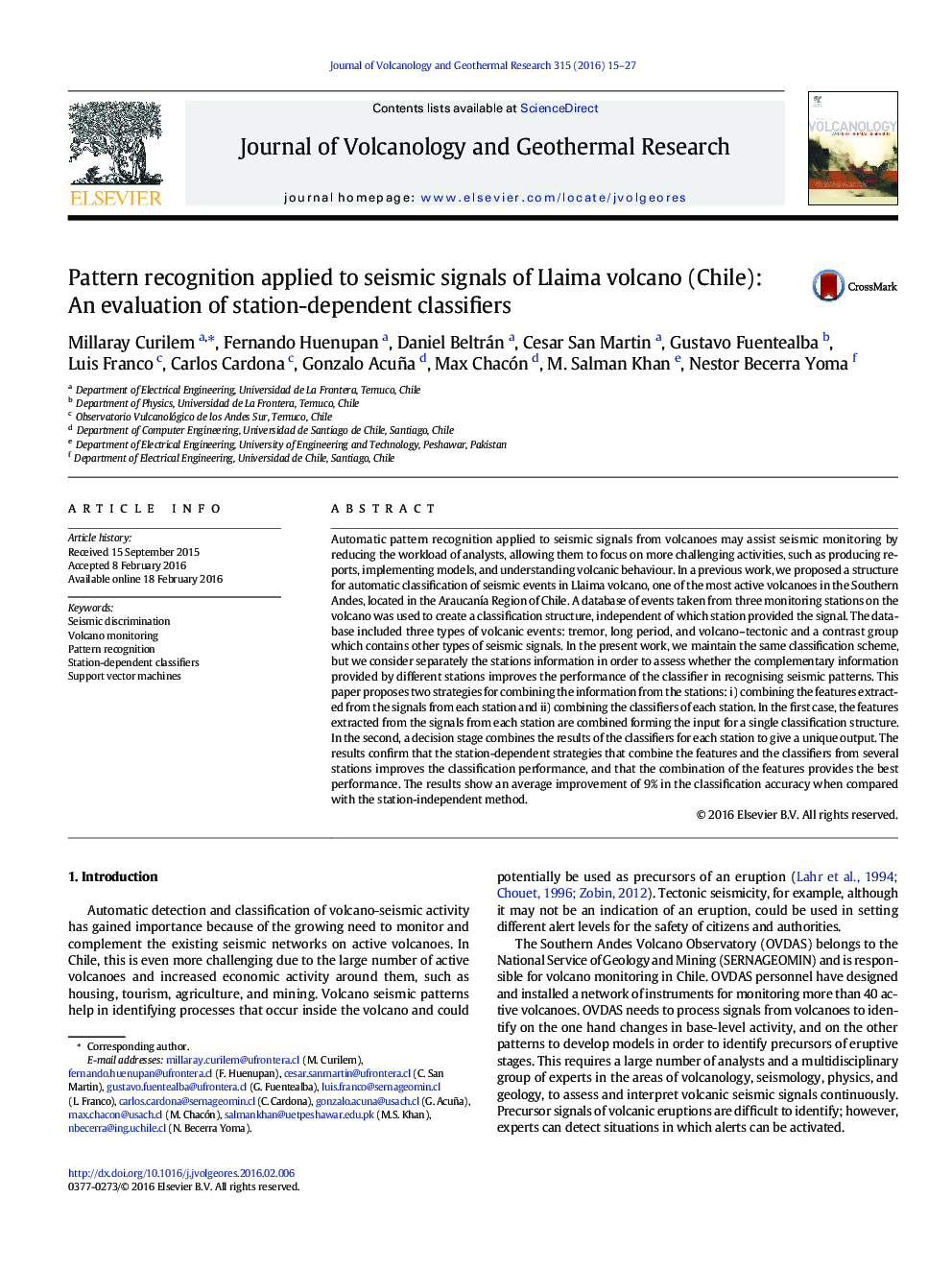| کد مقاله | کد نشریه | سال انتشار | مقاله انگلیسی | نسخه تمام متن |
|---|---|---|---|---|
| 4714156 | 1638307 | 2016 | 13 صفحه PDF | دانلود رایگان |

• We design classifiers to discriminate between three volcanic seismic events.
• We propose two fusion strategies to integrate several seismic stations information.
• Two station-dependent classifying structures are tested.
• Their classifying performances are compared with the station-independent strategy.
• The results show improvements when incorporating multi-stations information.
Automatic pattern recognition applied to seismic signals from volcanoes may assist seismic monitoring by reducing the workload of analysts, allowing them to focus on more challenging activities, such as producing reports, implementing models, and understanding volcanic behaviour. In a previous work, we proposed a structure for automatic classification of seismic events in Llaima volcano, one of the most active volcanoes in the Southern Andes, located in the Araucanía Region of Chile. A database of events taken from three monitoring stations on the volcano was used to create a classification structure, independent of which station provided the signal. The database included three types of volcanic events: tremor, long period, and volcano–tectonic and a contrast group which contains other types of seismic signals. In the present work, we maintain the same classification scheme, but we consider separately the stations information in order to assess whether the complementary information provided by different stations improves the performance of the classifier in recognising seismic patterns. This paper proposes two strategies for combining the information from the stations: i) combining the features extracted from the signals from each station and ii) combining the classifiers of each station. In the first case, the features extracted from the signals from each station are combined forming the input for a single classification structure. In the second, a decision stage combines the results of the classifiers for each station to give a unique output. The results confirm that the station-dependent strategies that combine the features and the classifiers from several stations improves the classification performance, and that the combination of the features provides the best performance. The results show an average improvement of 9% in the classification accuracy when compared with the station-independent method.
Journal: Journal of Volcanology and Geothermal Research - Volume 315, 1 April 2016, Pages 15–27